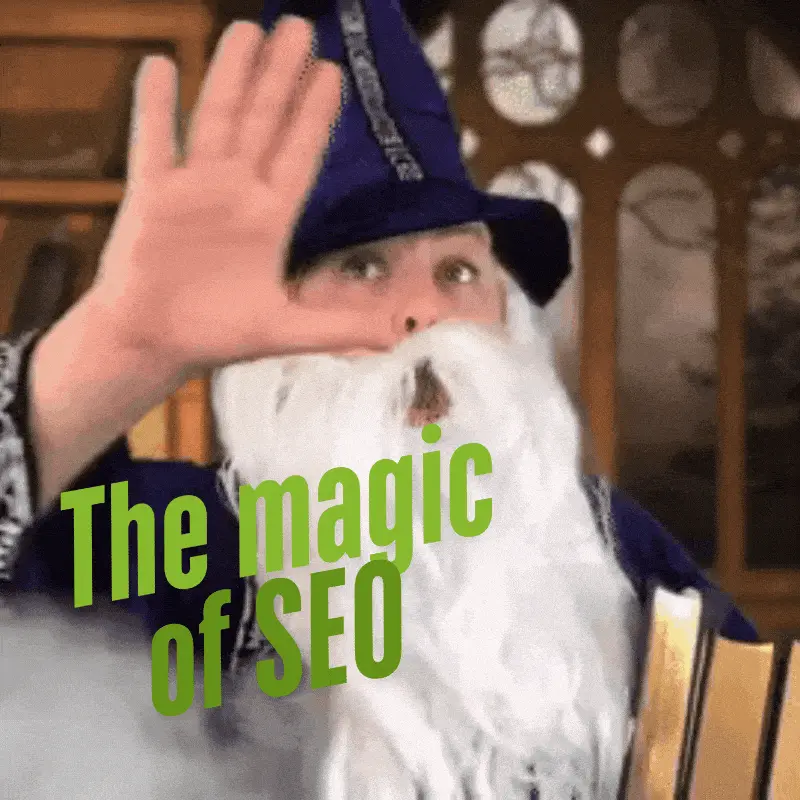By now, everyone has heard of the phrase “keyword stuffing” and if you haven’t, you’ve definitely experienced it. It’s when you land on a page with some clunky copy where keywords have been stuffed in to match what Googlers might be searching for perfectly.
There was a time where Google actually needed those keywords verbatim. It was a time where a strong amount of keywords meant good rankings and results.
We’ve moved past those days now. Google (and the other search engines) have become smart enough to link words with their synonyms and not rule out a keyword because you included a much-needed conjunction like ‘in’ or ‘and’.
So, in 2025, what does good SEO copy look like?
Well, for starters, it’s natural and it’s easy to read.
Table of Contents
ToggleHave you heard about semantic SEO? ✨
We’ll forgive you if you’re not keeping up with every aspect and angle of SEO. It’s a constantly changing industry and the algorithm keeps SEO specialists on their toes.
So much so that our specialists do a professional development chat every single week — so we can keep on top of it.
Semantic SEO is the new, best-practice approach to content — both on your website pages and in your blog posts and it’s all about creating topical authority.
Google doesn’t just look for keywords to rank a page. It’s looking at all aspects of a page and its website to decide if you have authority on a topic.
Let’s look at an example. Our digital marketing page is targeting the primary keyword of ‘digital marketing brisbane’.
But Google isn’t deciding that we should rank for that term because we said it a few times.
It’s looking at the page and seeing that we talk about SEO, content marketing, copywriting, and PPC. Those sub-services of digital marketing are what Google considers “entities”. It’s seeing that we have blog posts about each of those entities. It’s seeing that we’re linked to and quoted talking about the entities. It’s piecing together all these other snippets of information across our website that give a bit of a hint that we’re a digital marketing agency.
It’s also looking for other signals across the internet — like our social media and what we’re quoted about online.
As an aside, this is why a diverse approach to digital marketing and digital PR is so important.
Why are we talking about semantic SEO here?
Well, it’s the reason writing SEO copy naturally is more important than ever. Plus, we know that after years of sprouting about keywords mattering — it’s pretty jarring to tell you that now, they might matter a little bit less.

Work out who you’re writing for first 👨👩👧👦
Good copy starts with a crystal clear understanding of who your audience is. If you haven’t already defined your target audience, we’ve written a guide to defining your user personas.
Think about what they’re searching for, what information they might want from that search, and how they like to be communicated with.
This will give you the right foundation to:
- Give them the information they actually need
- Explain it in a way they understand
- Be engaging and appealing to them
Your copy should be engaging and easy for your target audience to read, understand, and believe.
You want it to be the perfect balance of educational and promotional while making sure your audience likes you.
Use the keywords but don’t jam them in 🍓
While semantic SEO is huge and is growing in importance, keywords do still matter. We need to know, at least conceptually, what people are searching for.
So, when you start writing — whether it’s a blog post or a service page — have your list of keywords handy.
Use them to guide what you write about and definitely include them in your copy. But don’t be afraid of synonyms and conjunctions.
Synonyms are words that are different, but have the same or similar meaning. So, if you’re selling dog food and your keyword is ‘dog food brisbane’, don’t be afraid to say ‘pet food’ or ‘food for dogs’.
Google is still going to understand what you’re talking about and it’ll know where to organise your page in the search results.
It’s the same with conjunctions — words that connect other words and clauses. So your ‘ifs’, ‘buts’, and ‘ands’.
You don’t have to say ‘dog food brisbane’ just because that’s the keyword. “We sell the healthiest and most nutritious dog food in the Brisbane area” will still tick off that keyword requirement, but it’ll be engaging, too.

Write for humans, not search engines 🦾
Writing SEO copy naturally comes back to writing for humans before the search engines.
Absolutely use your keywords. Definitely include internal links. And for sure, answer the questions people are searching for on Google.
But don’t get stuck in the weeds of hitting a keyword quota or, even worse, filling your blog post with waffle to hit a recommended word count.
All you need to do for the SEO side of things is include the keywords where they fit, cover the topic in full, and create an informative and engaging blog post.
The rest of your writing should be focused on the human reading it. So, make sure it speaks their language, addresses the problems they have (the kind that lead to them searching for your blog or page), and make it an interesting read.
Be engaging and make it valuable 💎
When you’re writing copy with the goal of ranking, it can be tempting to just stick to the facts and the aspects you have to include for SEO’s sake.
But engaging, easy-to-read copy plays into SEO results. Good copy that converts can perform well on Google, too. They aren’t mutually exclusive.
So, include stories and anecdotes, paint a picture of your target audience’s problems and pain points, and share specific aspects of your own experience delivering your service.
If it’s on-brand, don’t be scared to make jokes or include pop culture references. Just be mindful of your audience — if you’re going to include references, it’s important that they’ll get it.
Once you’ve ticked the SEO box and you’ve made it engaging, it’s important to make it valuable as well.
Include nuggets of wisdom and unique insights into your industry. Something that your audience and Google have in common is that they both want to learn something new.
Your audience wants to get insights from you that they can’t get elsewhere. It’s how they can determine why they should choose you over your competitors.
And Google already has loads of content up on its search engine. It wants to add something new and unique to the mix.
Delivering unique content with really good value is great for SEO and great for getting your audience to get in touch with you.

The same structures that search engines love are good for readability, too 🕸️
One thing humans and search engines have in common is a love for structure.
Here are a few things that make your content more appealing to search engines and a better experience for humans:
- Use headings (H1, H2, H3, etc.) to break up content logically
- Use dot points and lists to help them scan the content and understand it quicker
- Use internal and external links naturally to help them find their next step

Use images, GIFs, and other media 📸
SEO content is all about covering topics in full and ticking off the keywords you’ve mapped to your blog post or page.
That doesn’t mean it’s a words-only situation.
Images break up the content, add context to the page, and can help engage your website visitors.
These might be images of you and your team, which can help build trust with your audience. It might be images of your customers enjoying the product, which can help your visitors aspire to the benefits your product or service provides. Or, it might be an image that explains what the content is saying in a way that’s far easier to understand — that cliché about images being worth a thousand words exists for a reason.
Images, GIFs, videos, and other forms of media are all tools that can boost the value of your content. Don’t be afraid to use them.
Review and edit with readability in mind 📚
Once you have a draft of your content written. Sit down and edit it.
When you’re editing it, make sure it reads well. Our best advice for checking readability in your own writing is to read it out loud.
Our brains are naturally wired to fill in words and skim through writing. This is especially true when it’s something we’ve written ourselves — because we know exactly what we were trying to say.
By reading your content out loud, you can pick up on missed words, quickly spot sentences that are a little too long, or phrases that are just a bit clunky.
You can also hear when you’re getting bored. It’s a great way to optimise the lengths of your sentences and work out exactly what needs to be tweaked.
Need a hand with bringing SEO and copywriting together? We’d love to help you out 👋




